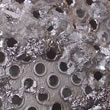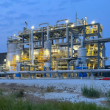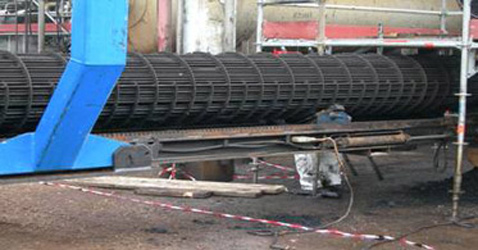Apr-2023
Future of LNG demand in Japan
As oil, coal, and other energy sources decline in the energy transition to net zero, LNG demand will remain strong in the long transition to renewables.
Jeremy Goh
Baker and O’Brien Inc.
Viewed : 2112
Article Summary
Japan has had a long history of LNG imports, with the first cargo arriving more than 50 years ago in November 1969. Since then, Japan has historically been the largest importer of LNG in the world. In 2021, China overtook Japan as the largest importer. This trend was interrupted in 2022 as high LNG prices contributed to a drop in Chinese LNG demand, while Japanese LNG imports remained relatively stable.
In addition, against the backdrop of an ageing and shrinking population and recent announcements that the official government energy policy target is net zero carbon emissions, the future for Japanese LNG imports warrants a further review of new factors coming into play, such as renewables. In parallel, government policy on nuclear and renewables and the significant impact it is projected to have on Japan’s future gas and LNG demand should be considered.
Dependence on imported energy
Japan’s geography has historically limited the range of energy solutions it has been able to rely upon for its large industrial economy. Japan is geographically expansive, stretching about 1,900 miles from tip to tip, or about the distance from Houston to Seattle. Located on the Pacific Ring of Fire, this island nation includes around 6,852 islands, although most people live on one of the four main islands. From north to south, Japan stretches over a wide range of latitudes, approximately the equivalent of Minneapolis to Mexico City.
Most of its land area is mountainous, seismically active, and occasionally volcanic, with less than 20% of the land being arable. Japan also lacks major oil and gas basins, so less than 2% of Japanese gas needs are met by indigenous production. Although coal resources do exist at both ends of the country on the southern island of Kyushu and Hokkaido in the north, these are not cost competitive with imported coal.
The mountainous terrain also leads to isolated energy markets with limited interconnections. Consequently, Japan’s electric utilities have historically been regionally based and mostly self-sufficient. As a result, Japan must import most of its energy needs and spread out the sources of power generation due to the isolated markets and demand centres.
Most LNG used for electricity generation
Eighty-five per cent of Japanese primary energy comes from oil, coal, or natural gas. After the 1970s oil crises, Japan began to diversify its energy sources with the introduction of coal, gas, and nuclear power stations (see Figure 1, left).
As gas-fired power generation demand grew, the lack of indigenous gas supplies meant that LNG imports were necessary. In 2020, the power sector consumed about two-thirds of the gas supply (see Figure 1, right). As a result, to understand Japan’s future LNG and gas demand, it is important to understand how Japan’s power mix may evolve.
Unique grid system
Uniquely amongst developed nations, Japan has two power grids with different voltages and frequencies. One, in the east, runs on the 220 V/50 Hz system; the other, in the west, runs on the 110 V/60 Hz system. This is a historical legacy – in the 1800s, Tokyo bought 50 Hz generators from Germany, whereas the Kansai region, where Osaka lies, bought 60 Hz generators from GE in the US.
Over time, most countries have rationalised their multiple electrical systems into a national grid. However, the cost-benefit trade-off for transitioning to a single electrical system has not been attractive, especially when regional rivalries are considered.
Unfortunately, in recent times, the two-grid approach has caused some difficulties. The Great Tohoku earthquake and tsunami of March 2011 affected the northeast coast, or the Tohoku region. Most of Japan’s power generation facilities are located on the coast for cooling water supplies, as well as the reliance on imported sources of energy. As a result, they were greatly affected by the devastating tsunami in 2011.
The Fukushima Daiichi nuclear reactor was the most high-profile casualty of the tsunami. However, a total of 11 power stations were offline because of the earthquake, accounting for about 10 GW of capacity – all in the 50 Hz zone.
The western region, which runs on 60 Hz, was unaffected. However, surplus capacity could not be routed to the 50 Hz zone because there was only 1 GW of interconnection capacity between the two grids at the time.
This lack of interconnections between the different electricity grids and the isolated demand centres has implications for the infrastructure requirements of the future power grid. As higher levels of renewables are added to the power mix, vastly greater amounts of interconnection will be required to accommodate the intermittent nature of renewables. This challenge is made more complex by the two separate electricity frequency systems.
Gas declines slowly
In 2002, the Japanese government passed the Basic Act on Energy Policy. In 2003, the Ministry of Energy, Trade and Industry (METI) published the first Strategic Energy Plan (SEP). The 2018 5th SEP called for a policy of more nuclear to reduce greenhouse gas emissions while meeting energy security requirements.
In 2021, the Japanese government announced a policy to achieve net zero by 2050. The 6th SEP called for a significant increase in renewables in the power mix, 60% more renewables than in the 5th SEP, which came out three years earlier (see Figure 2). In addition, the new plan included a nuclear renaissance that would more than triple the share of nuclear power in the power mix.
Ultimately, the goal was to reduce greenhouse gas emissions by 46% compared with 2019 levels. This was to be achieved by reducing oil, gas, and coal power from 76% of the power mix in 2019 to 41% by 2030. Notably, gas remains an important part of the long-term power mix. The volume of gas consumed in the power sector will decline slowly and is not expected to disappear completely.
However, the plan has significant challenges, not least the long-term reliance on nuclear power to achieve the goal of net zero emissions by 2050. The ability of Japan to increase its nuclear power will have a large impact on gas and LNG demand.
Nuclear renaissance
The Fukushima Daiichi Nuclear Power Plant lies on the northeast coast of Japan in Okuma in the province of Fukushima. After the Fukushima disaster of 2011, all nuclear power plants in Japan were shut down. Although restarts have happened since then, only 6% of electricity in Japan was generated via nuclear power in 2019, compared to 25% prior to 2011. Japan’s nuclear ambitions, therefore, must overcome the strong anti-nuclear lobby and the tarnished reputation of nuclear power post-Fukushima. Despite strong pushes to reopen the nuclear power stations, the approval process has been very slow.
However, the 6th SEP’s adoption has begun to produce some changes. On 21 December 2022, Japan’s Nuclear Regulation Authority proposed a new rule allowing the current 40-year normal operating period to be extended to 60 years or more. In addition, new reactors meeting upgraded post-Fukushima safety standards have been proposed to replace retiring reactors. Achieving nuclear ambitions, therefore, is still very uncertain, but at least now it has stronger backing.
Wide range of uncertainty
In Figure 2, we also present a low-nuclear scenario, where nuclear power is restricted to the 2019 levels of 6%. In this scenario, gas accounts for 28% of the power mix in 2030, up from 20% on the 6th SEP.
However, the energy mix plans are only strategic directions and must be implemented by utility companies. Adding up the latest (2022) utility plans and expectations for generated power in 2031 shows that these plans include 6% nuclear, like 2019, and fewer renewables than on the 6th SEP. In this scenario, gas accounts for 31% of all power generated.
Therefore, there is a wide range of plausible gas and LNG demand scenarios for Japan by 2030 – gas demand may differ by as much as 50% depending on nuclear and renewables generation. Meeting this gas demand uncertainty requires flexibility.
Categories:
Add your rating:
Current Rating: 4

















